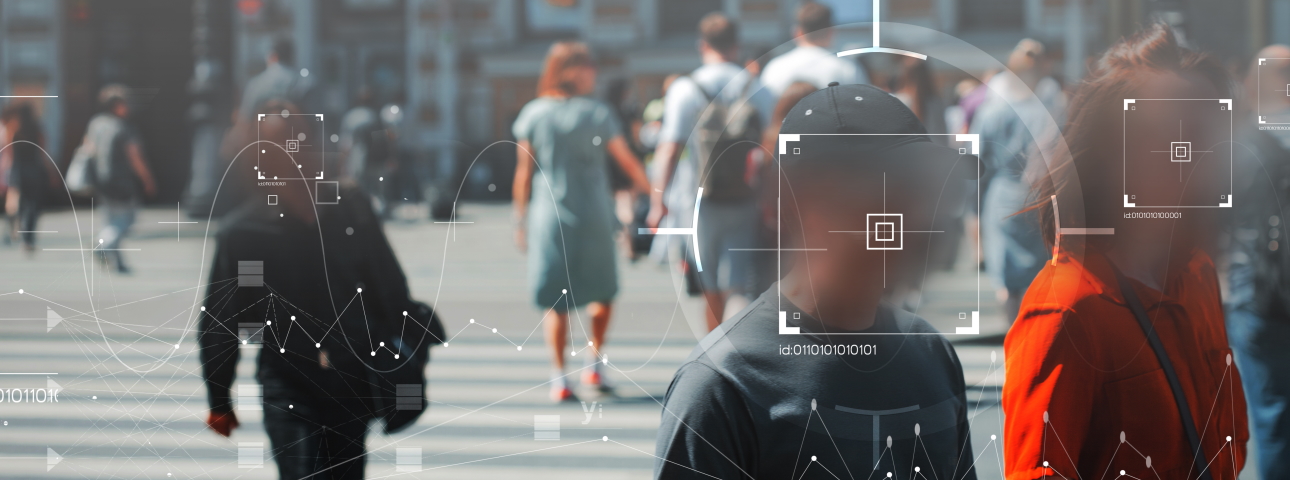Biometric and Facial Recognition Bill - IDI Professional Opinion
The memorandum in question, which deals inter alia with the sensitive topic of the use of biometric facial recognition systems by the Israel Police, is abusive and disproportionate and reflects a lack of adequate preparatory work.

Main points from a professional opinion by Dr. Tehilla Shwartz-Altshuler and Adv. Amir Cahane re: Memorandum of a Bill to Amend the Police Ordinance (New Version) (Special Photography Systems) 5782-2022
Background
On July 8, 2021, a memorandum dealing with “special photography systems” was posted to the Government bill memoranda site. Under this heading, it included not only license-plate readers, but also facial recognition systems. The memorandum also covered the use of facial recognition to enforce restraining orders and bans on entering public places—which implies the possibility of its use to quell protest demonstrations.
The fundamental problem with the deployment of facial recognition by the police lies in the vast qualitative gap between identification of an inanimate object such as license plates, and the identification of human faces. We submitted an opinion on this in July 2021.
Today, there is a clear trend in the Western world, to prohibit law enforcement agencies from employing facial recognitions systems, for a number of reasons:
Errors: The basic recognition functions of facial recognition systems are ridden with algorithmic biases. Furthermore, advanced facial recognition systems, which aim to analyze behavior patterns, predict violent tendencies or engage in profiling, lack proper scientific basis and are prone to error.
Discrimination and over-enforcement: Facial recognition systems that are trained on existing systemically biased datasets, are likely to become biased themselves, and lead to further over-policing of minorities which have already been subjected to it.
Fears of leaks: The misuse by persons in authority and the fear of leaks of information from extremely sensitive biometric databases.
The depth of the information: The use of such systems provides the police with access to much more detailed information than simply who was where, and when. It has the potential to be used to analyze moods, sexual orientation, and more.
Chilling effect: deployment of a network of smart cameras in public spaces would deter people from behaving freely, out of fear that they are being watched; this includes exercise of their political rights.
“Black” searches: Systems that preform general, untargeted data collection provide the police with nonspecific information, on par with intelligence agencies and the military.
The most problematic aspects of the memorandum relate to its provisions regarding use, deployment and access to data captured and accrued by facial recognition systems:
(1) The memorandum does not include any concrete justifications, grounded in facts, for the need to use facial-recognition systems and for their effectiveness, nor does it take account of scientific efforts to deal with their known biases.
(2) The memorandum reflects a problem in understanding the technological architecture of facial recognition systems, because it is based entirely on a distinction among real-time biometric identification, data not identified in real time for “biometric” purposes, and data not identified in real time for other purposes.
(3) The memorandum is unclear as to the grounds under which deployment of facial recognition cameras would be permitted. It specifies that such systems may be deployed or several purposes, including:
(a) To prevent, thwart, or detect serious crimes. Serious crimes are defined as those punishable by more than seven years in prison, as well as crimes listed in the fourth appendix. However, the fourth appendix in missing from the memorandum, and accordingly the offenses that are not serious crimes that may warrant the use of facial recognition cameras remain unknown.
(b) Enforcement of bans on entering public places issued under law, or enforcement of protection orders.
(4) The memorandum is unclear as to the uses that may be made of facial recognition data, nor does the document distinguishes among preventing crime, investigating crime, research, and predictive policing applications.
The oversight and monitoring mechanisms prescribed are inadequate, given the sensitivity of the data.
